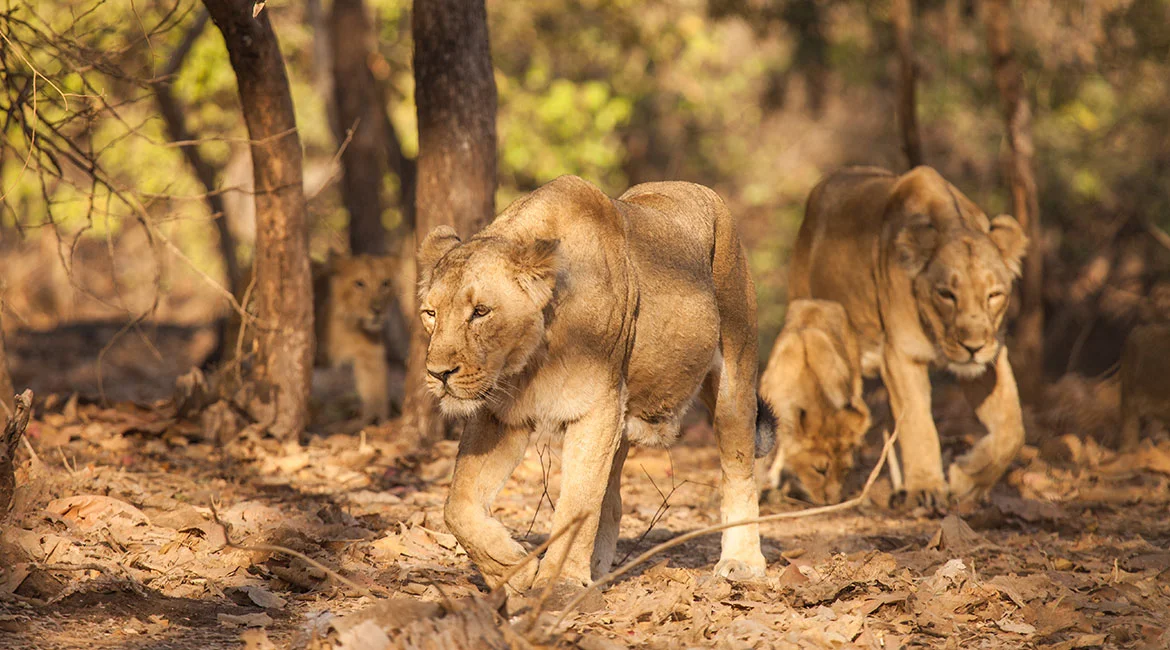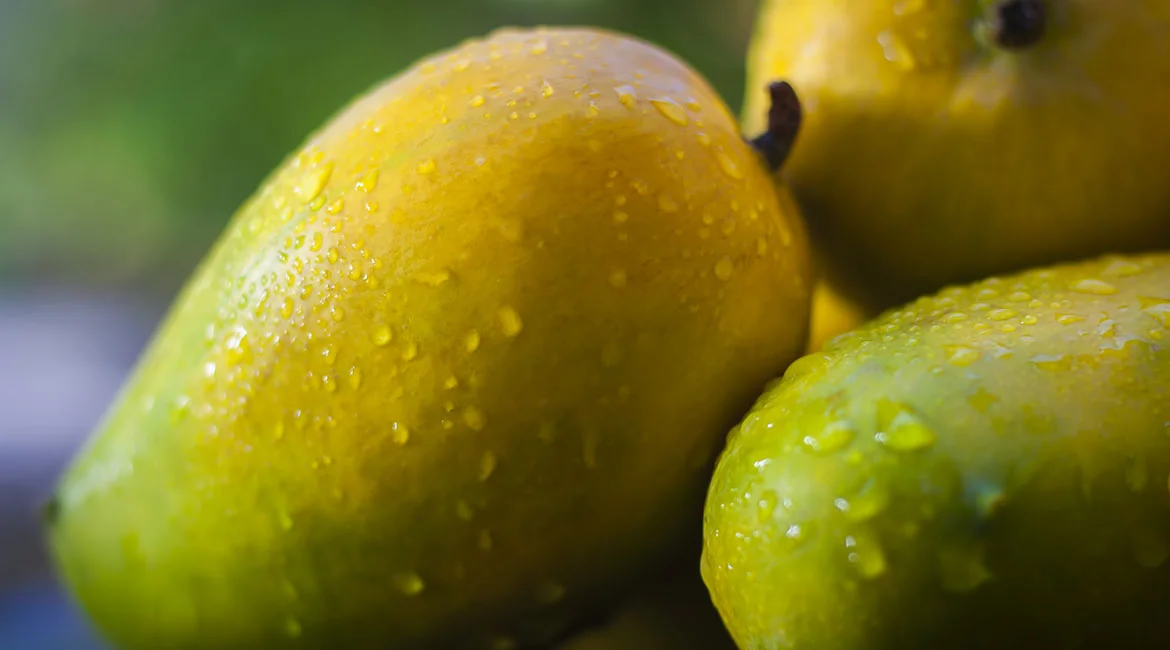Gir is a magnificent place in Gujarat, India. It is famous in the world for two things, Asiatic Lions and Kesar Mangoes. Lions are the pride of Gujarat. Approximately there are 674 lions in the Gir region as this blog is being written. They are spread in various parts of the jungle. Sometimes lions also invite themselves to the nearby farms and residential areas where they most of the time don’t bother as if they know that they are part of their region. The travelling people can witness the royal procession of lions on the road as they decide to take a walk out of their jungle in the search of food, water or just for leisure. Many two-wheeler travellers have encountered such situations and have handled them smartly. By not running off and staying still without moving an inch, they have let the king of the jungle pass peacefully to his desired destination. The area of Gir forest supports a large number of biodiversity. Gir forest is a home for many other animals like chital, nilgai, deer, sambar, four-horned antelope, chinkara, wild boar, jackal, leopard, hyena, monkey. Yearly 12-13 lions were hunted before 1900 by the King. In 1913, the population of lions was around 20. But after hunting was banned the population of lions gradually increased.
Asiatic lions are different in appearance than African lions. The most distinguishing characteristic of the Asiatic lion is the longitudinal fold of skin that runs along its belly. The mane of Asiatic lions is short, dark and brownish. They are also smaller in height than the African lions. Although small in size, Asiatic lions are considered as deadly predators with their strong retractable claws, large sharp canines and incredible might. The practice of making a pride is also different in both male and female lions. The females make their pride with other lionesses and the cubs. Males generally are lone in nature and roam alone. They sometimes make pride with 2-3 females. Male and female pride get along only in the mating season. Female lions don’t share the large hunt with the male lions. In this way, they don’t feed together and don’t travel together.
Asiatic lions are considered an endangered species by the International Union For Conservation Of Nature. Lions often get in conflict with humans. After 2015, there is a notable rise of nearly 29% in the population of lions. Many lions live outside the protected region and wander in the human areas in search of water and food and attack the cattle. Gir forest is the only natural habitat for lions in India. It provides an ideal camouflaged environment for many animals as the colour of the vegetation remains golden brown most of the time of the year except the rainy season. There are currently five protected areas to protect the Asiatic lions: Gir Sanctuary, Gir National Park, Pania Sanctuary, Mitiyala Sanctuary, and Girnar Sanctuary.
Gir region embraces many tribal communities, especially cattle herders and farmers. The cattle herders are known as ‘Maldhari’ and the area where they live in a group with their cattle is known as ‘Nes’ in the Gujarati language. Maldharis are pastoral communities who are living in the Gir region, for now, more than 125+ years. This community is involved in cattle rearing.
When lions don’t find a hunt or if they miss the hunt, they enter the nes of maldharis and hunt an animal from their cattle like -buffalo, cow and goat as they are an easy catch because of their weakness to run fast as the wild animals who are comparatively quick and run away easily. A religious connection of lions with Hindu god Narasimha is also one of the reasons why lions are respected in the Gir region. Narasimha is the fourth incarnation of Lord Vishnu with half-human and half-lion body. Lord Vishnu took the form of Lord Narasimha to end the evil in a Hindu mythological story. The lion is also a vehicle of Hindu Goddess Durga. So the cattle herders don’t mind if the lion hunts their cattle.
African-origin Siddi community also lives in the Gir region. They have been living here for centuries now like any other local community. It’s like a little Africa merged with India.
Some of the groups from the Siddi community entertain the tourists coming from the various parts of India with Siddi dance. The male dancers paint their faces and dance rhythmically on the energetic beats of the drums. They also mimic the wild animals to amuse the children of tourists watching the show. Other Siddi people are involved in the laborious world or agricultural work. All the communities living inside and on the outskirts of the Gir region coexist with the wilderness like they are a part of each other.
The second best thing about Gir-Kesar Mangoes is grown in Talala. Talala is a town nestled in the Gir region of Junagadh District also popularly known as the capital of Gir. Talala is known for its huge orchards of Kesar mangoes. In the summer season, the mangoes hang on the trees like jewels waiting to be plucked. Gir Kesar mangoes are famous in the whole world for its deliciousness. This particular variety of mango was named Kesar due to the saffron colour of the pulp after the mango ripens. Sometimes the skin of ripened mango is hardly greenish-yellow from outside but when you cut it open, you can see the juicy saffron pulp inside which waters your mouth. Gir Kesar Mangoes are exported from Gir to all the regions of India and the world. Indian households eat the thick mango juice called ‘aamras’ with their meals day and night during the season.
People of Gir have great respect towards the environment and they take immense care that there is no littering around with harmful plastics that pose dangers for wild animals and cattle. We also work closely with communities and farmers to preserve the environment and provide a safe habitat for the animals to live. We are proud of our Gir region.







